Improvement of SAW Resonator Performance by Petal-like Topological Insulator
Abstract
:1. Introduction
2. SAW Topology Insulator Design and Energy Band Characterization
2.1. Unit Cell Model of Phononic Crystals
2.2. Energy Band Properties of Phononic Crystals
2.3. Interface State Characteristics of Supercell
3. SAW Robust Waveguide Design Based on Topological Boundary States
4. SAW Resonator Performance Analysis
4.1. SAW Topology Boundary Transmission Effects and S21 Parameters
4.2. Resonator Quality Factor Q
4.3. SAW Resonator Sensitivity Analysis
5. Conclusions
Author Contributions
Funding
Institutional Review Board Statement
Informed Consent Statement
Data Availability Statement
Conflicts of Interest
References
- Rayleigh, L. On Waves Propagated Along the Plane Surface of an Elastic Solid. Proc. Lond. Math. Soc. 1885, 1, 4–11. [Google Scholar] [CrossRef]
- White, R.M.; Voltmer, F.W. Direct Piezoelectric Coupling to Surface Elastic Waves. Appl. Phys. Lett. 1965, 7, 314–316. [Google Scholar] [CrossRef]
- Yang, Y.; Dejous, C.; Hallil, H. Trends and applications of surface and bulk acoustic wave devices: A review. Micromachines 2022, 14, 43. [Google Scholar] [CrossRef] [PubMed]
- Kimura, T.; Kishimoto, Y.; Omura, M.; Hashimoto, K.Y. 3.5 GHz longitudinal leaky surface acoustic wave resonator using a multilayered waveguide structure for high acoustic energy confinement. Jpn. J. Appl. Phys. 2018, 57, 07LD15. [Google Scholar] [CrossRef]
- Liu, H.; Zhang, Q.; Zhao, X.; Wang, F.; Chen, M.; Li, B.; Fu, S.; Wang, W. Highly coupled leaky surface acoustic wave on hetero acoustic layer structures based on ScAlN thin films with a c-axis tilt angle. Jpn. J. Appl. Phys. 2021, 60, 031002. [Google Scholar] [CrossRef]
- Xu, Q.; Xin, T.; Wen, Z.; Liu, Y.; Cai, Y.; Soon, B.W.; Liu, W.; Sun, C. High-Q A0 Mode Plate Wave Resonator on X-cut LiNbO3 Films with Dummy Electrode Arrays. In Proceedings of the 2022 IEEE International Ultrasonics Symposium (IUS), Venice, Italy, 10–13 October 2022; pp. 1–4. [Google Scholar]
- Yao, H.; Zhang, S.; Wu, J.; Zhang, L.; Zheng, P.; Fang, X.; Sun, M.; Sui, D.; Zhou, M.; Huang, K.; et al. Enhancement of Quality Factor Using Dummy Electrodes at Nonsymmetric In-plane Rotation Angles in LiTaO3 /SiO2 /Sapphire SAW Resonators. In Proceedings of the 2023 IEEE International Ultrasonics Symposium (IUS), Montreal, QC, Canada, 3–7 September 2023; pp. 1–3. [Google Scholar]
- Sun, X.-C.; He, C.; Lu, M.-H.; Chen, Y.-F. Topological properties of artificial bandgap materials. Acta Phys. Sin. 2017, 66, 224203. [Google Scholar]
- Fang, X.; Wen, J.; Bonello, B.; Yin, J.; Yu, D. Ultra-low and ultra-broad-band nonlinear acoustic metamaterials. Nat. Commun. 2017, 8, 1288. [Google Scholar] [CrossRef]
- Fang, X.; Wen, J.; Benisty, H.; Yu, D. Ultrabroad acoustical limiting in nonlinear metamaterials due to adaptive-broadening band-gap effect. Phys. Rev. B 2020, 101, 104304. [Google Scholar] [CrossRef]
- Ma, G.; Sheng, P. Acoustic metamaterials: From local resonances to broad horizons. Sci. Adv. 2016, 2, e1501595. [Google Scholar] [CrossRef]
- Fleury, R.; Sounas, D.L.; Sieck, C.F.; Haberman, M.R.; AlùSound, A. Isolation and Giant Linear Nonreciprocity in a Compact Acoustic Circulator. Science 2014, 343, 516–519. [Google Scholar] [CrossRef]
- He, C.; Ni, X.; Ge, H.; Sun, X.-C.; Chen, Y.-B.; Lu, M.-H.; Liu, X.-P.; Chen, Y.-F. Acoustic topological insulator and robust one-way sound transport. Nat. Phys. 2016, 12, 1124–1129. [Google Scholar] [CrossRef]
- Yu, S.Y.; Sun, X.C.; Ni, X.; Wang, Q.; Yan, X.J.; He, C.; Liu, X.-P.; Liang, F.; Lu, M.-H.; Chen, Y.F. Surface phononic graphene. Nat. Mater. 2016, 15, 1243–1247. [Google Scholar] [CrossRef] [PubMed]
- Lu, J.; Qiu, C.; Ye, L.; Fan, X.; Ke, M.; Zhang, F.; Liu, Z. Observation of topological valley transport of sound in sonic crystals. Nat. Phys. 2017, 13, 369–374. [Google Scholar] [CrossRef]
- Wang, Y.H.; Zhang, Z.W.; Cheng, Y.; Liu, X.J. Pseudospin modes of surface acoustic wave and topologically protected sound Transmission in phononic crystal. Acta Phys. Sin. 2019, 68, 227805. [Google Scholar] [CrossRef]
- Luo, Q.B.; Huang, X.Q.; Deng, W.Y.; Wu, Y.; Lu, J.-Y.; Liu, Z.-Y. Type-II Dirac points and edge transports in phononic crystal plates. Acta Phys. Sin. 2021, 70, 184302. [Google Scholar] [CrossRef]
- Zhang, Z.D.; Yu, S.Y.; Ge, H.; Wang, J.-Q.; Wang, H.-F.; Liu, K.-F.; Wu, T.; He, C.; Lu, M.-H.; Chen, Y.-F. Topological Surface Acoustic Waves. Phys. Rev. Appl. 2021, 16, 044008. [Google Scholar] [CrossRef]
- Wang, J.-Q.; Zhang, Z.-D.; Yu, S.-Y.; Ge, H.; Liu, K.-F.; Wu, T.; Sun, X.-C.; Liu, L.; Chen, H.-Y.; He, C.; et al. Extended topological valley-locked surface acoustic waves. Nat. Commun. 2022, 13, 1324. [Google Scholar] [CrossRef]
- Sun, J.H.; Jhou, J.H. Study of surface acoustic waves in SiO2 /LiNbO3 layered-structure phononic crystals. Jpn. J. Appl. Phys. 2014, 53, 07KB04. [Google Scholar] [CrossRef]
- Achaoui, Y.; Khelif, A.; Benchabane, S.; Robert, L.; Laude, V. Experimental observation of locally-resonant and Bragg band gaps for surface guided waves in a phononic crystal of pillars. Phys. Rev. B 2011, 83, 104201. [Google Scholar] [CrossRef]
- Benchabane, S.; Gaiffe, O.; Salut, R.; Ulliac, G.; Laude, V.; Kokkonen, K. Guidance of surface waves in a micron-scale phononic crystal line-defect waveguide. Appl. Phys. Lett. 2015, 106, 081903. [Google Scholar] [CrossRef]
- Wu, L.H.; Hu, X. Scheme for Achieving a Topological Photonic Crystal by Using Dielectric Material. Phys. Rev. Lett. 2015, 114, 223901. [Google Scholar] [CrossRef] [PubMed]
- Yang, Y.; Xu, Y.F.; Xu, T.; Wang, H.X.; Jiang, J.H.; Hu, X.; Hang, Z.H. Visualization of a Unidirectional Electromagnetic Waveguide Using Topological Photonic Crystals Made of Dielectric Materials. Phys. Rev. Lett. 2018, 120, 217401. [Google Scholar] [CrossRef] [PubMed]
- Li, Y.; Wu, Y.; Mei, J. Double Dirac cones in phononic crystals. Appl. Phys. Lett. 2014, 105, 014107. [Google Scholar] [CrossRef]
- Chen, Z.G.; Ni, X.; Wu, Y.; He, C.; Sun, X.-C.; Zheng, L.-Y.; Lu, M.-H.; Chen, Y.-F. Accidental degeneracy of double Dirac cones in a phononic crystal. Sci. Rep. 2014, 4, 4613. [Google Scholar] [CrossRef]
- Zheng, Z.F.; Yin, J.F.; Wen, J.H.; Yu, D.-L. Topologically protected edge states of elastic waves in phononic crystal plates. Acta Phys. Sin. 2020, 69, 156201. [Google Scholar] [CrossRef]
- Jin, Y.; Wang, W.; Wen, Z.; Torrent, D.; Djafari-Rouhani, B. Topological states in twisted pillared phononic plates. Extrem. Mech. Lett. 2020, 39, 100777. [Google Scholar] [CrossRef]
- Pal, R.K.; Ruzzene, M. Edge waves in plates with resonators: An elastic analogue of the quantum valley Hall effect. New J. Phys. 2017, 19, 025001. [Google Scholar] [CrossRef]
- Brand, O.; Pourkamali, S. Electrothermal Excitation of Resonant MEMS. In Advanced Micro and Nanosystems; Brand, O., Dufour, I., Heinrich, S.M., Fabien, J., Eds.; Wiley: Hoboken, NJ, USA, 2015; p. 173. [Google Scholar]
- Takai, T.; Iwamoto, H.; Takamine, Y.; Yamazaki, H.; Fuyutsume, T.; Kyoya, H.; Nakao, T.; Kando, H.; Hiramoto, M.; Toi, T.; et al. High-Performance SAW Resonator on New Multilayered Substrate Using LiTaO3 Crystal. IEEE Trans. Ultrason. Ferroelectr. Freq. Control 2017, 64, 1382–1389. [Google Scholar] [CrossRef]
- Chen, Q.; Wang, Q.M. The effective electromechanical coupling coefficient of piezoelectric thin-film resonators. Appl. Phys. Lett. 2005, 86, 022904. [Google Scholar] [CrossRef]
- Vellekoop, M.J. Acoustic wave sensors. Theory, design and physicochemical applications. Sens. Actuators A Phys. 1997, 63, 79. [Google Scholar] [CrossRef]
- Abdollahi, A.; Jiang, Z.; Arabshahi, S. Evaluation on mass sensitivity of SAW sensors for different piezoelectric materials using finite-element analysis. IEEE Trans. Ultrason. Ferroelectr. Freq. Control 2007, 54, 2446–2455. [Google Scholar] [CrossRef] [PubMed]
- Li, S.; Sankaranarayanan, S.K.R.S.; Fan, C.; Su, Y.; Bhethanabotla, V.R. Achieving Lower Insertion Loss and Higher Sensitivity in a SAW Biosensor via Optimization of Waveguide and Microcavity Structures. IEEE Sens. J. 2017, 17, 1608–1616. [Google Scholar] [CrossRef]
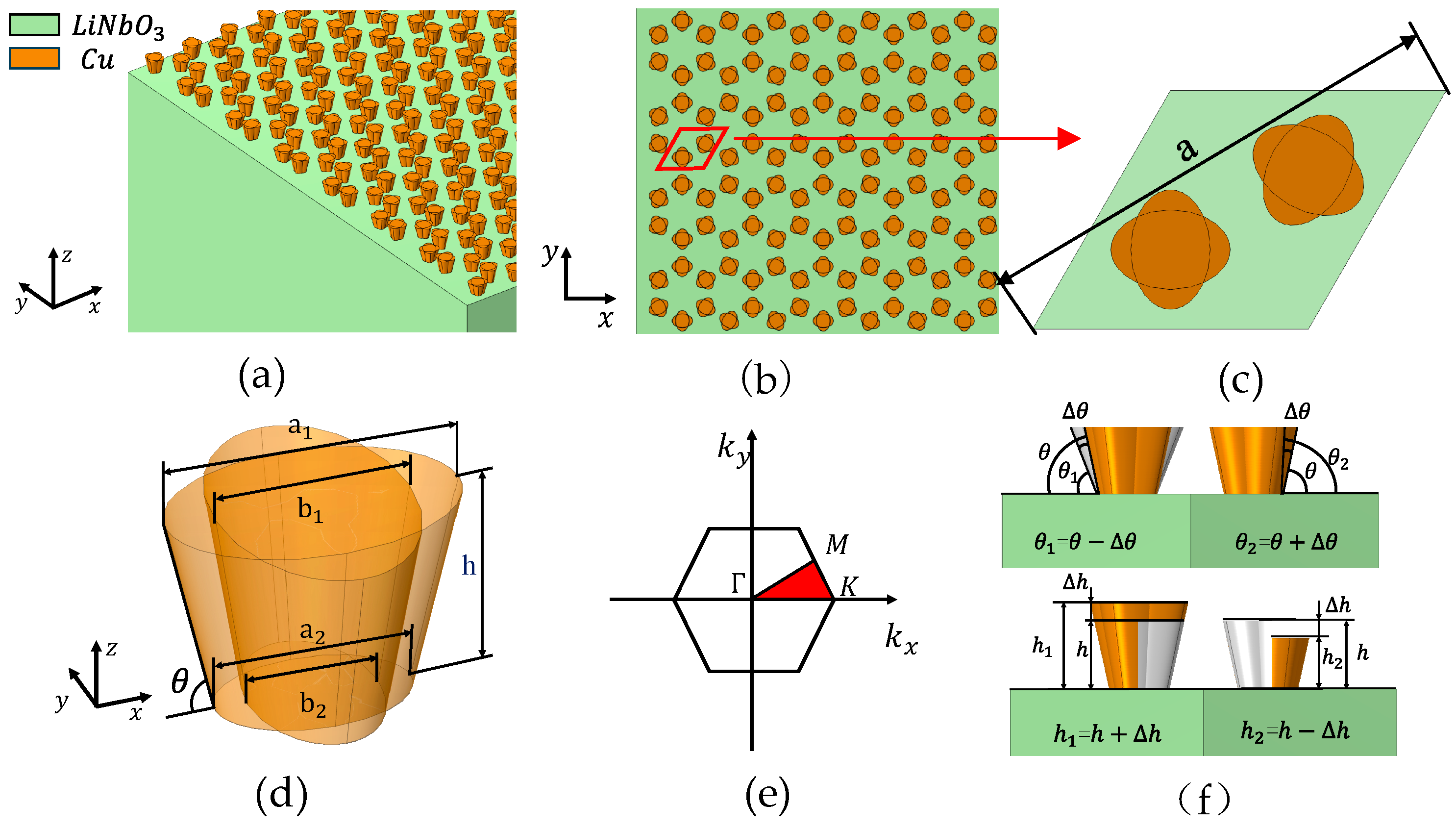
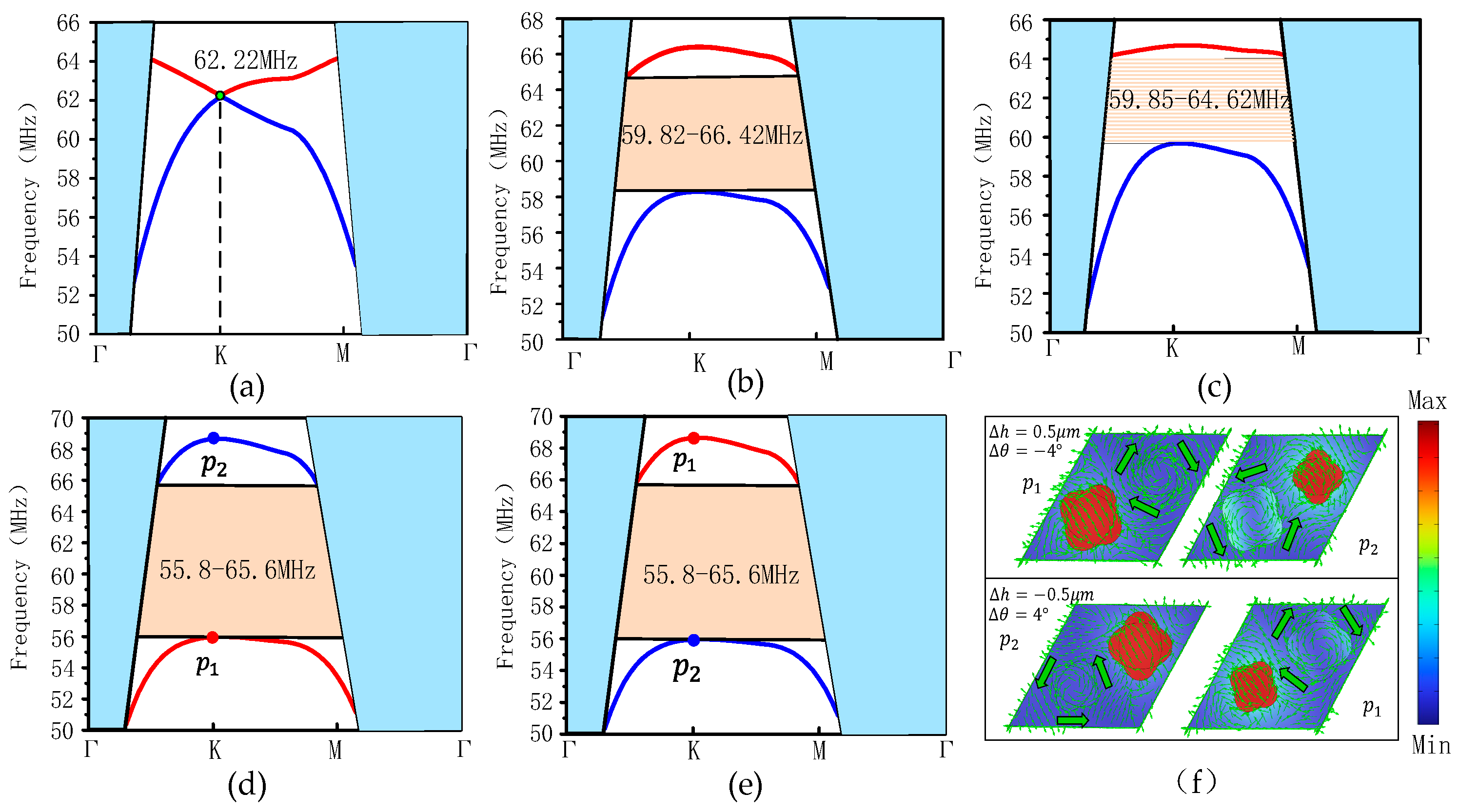
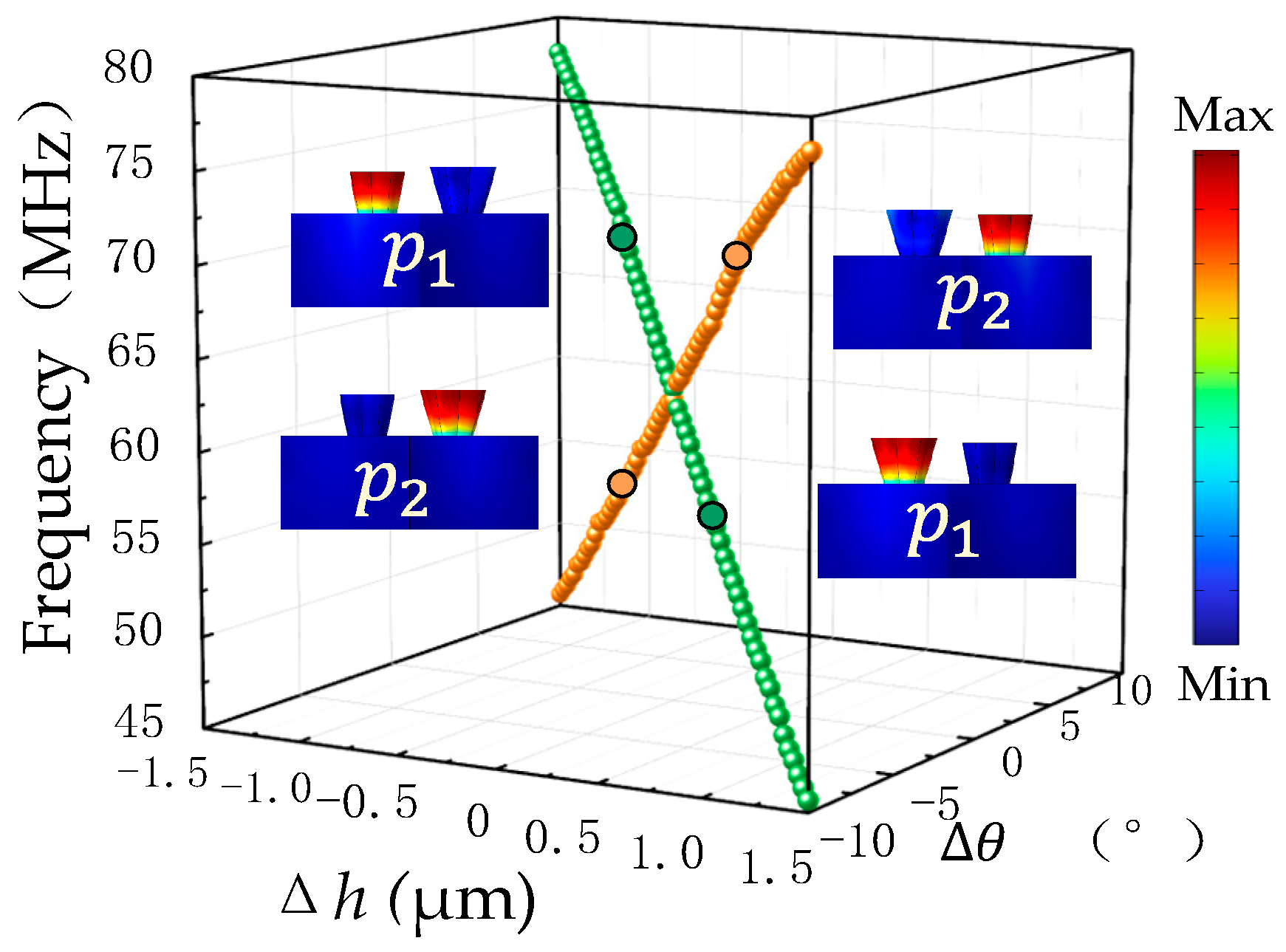
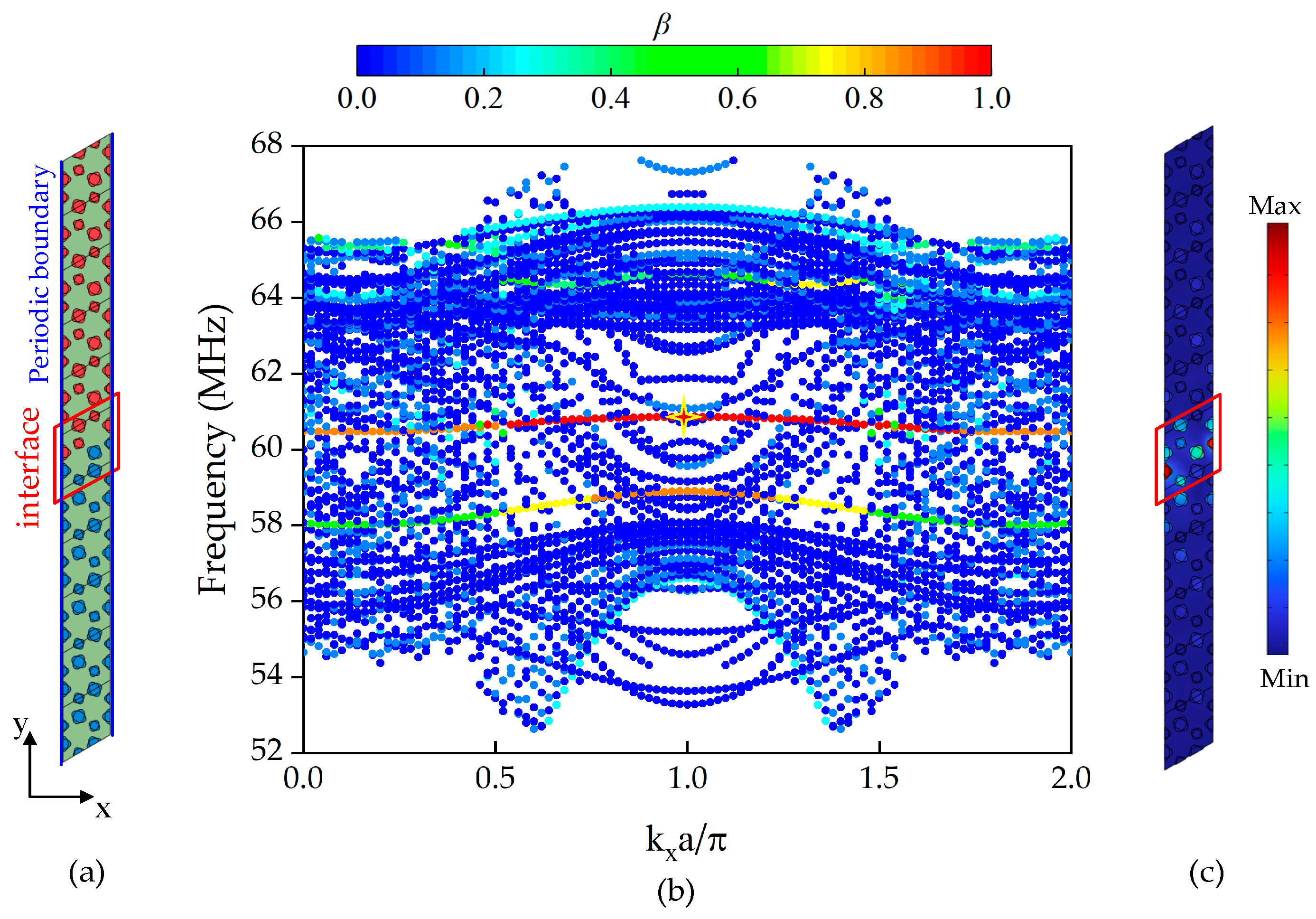
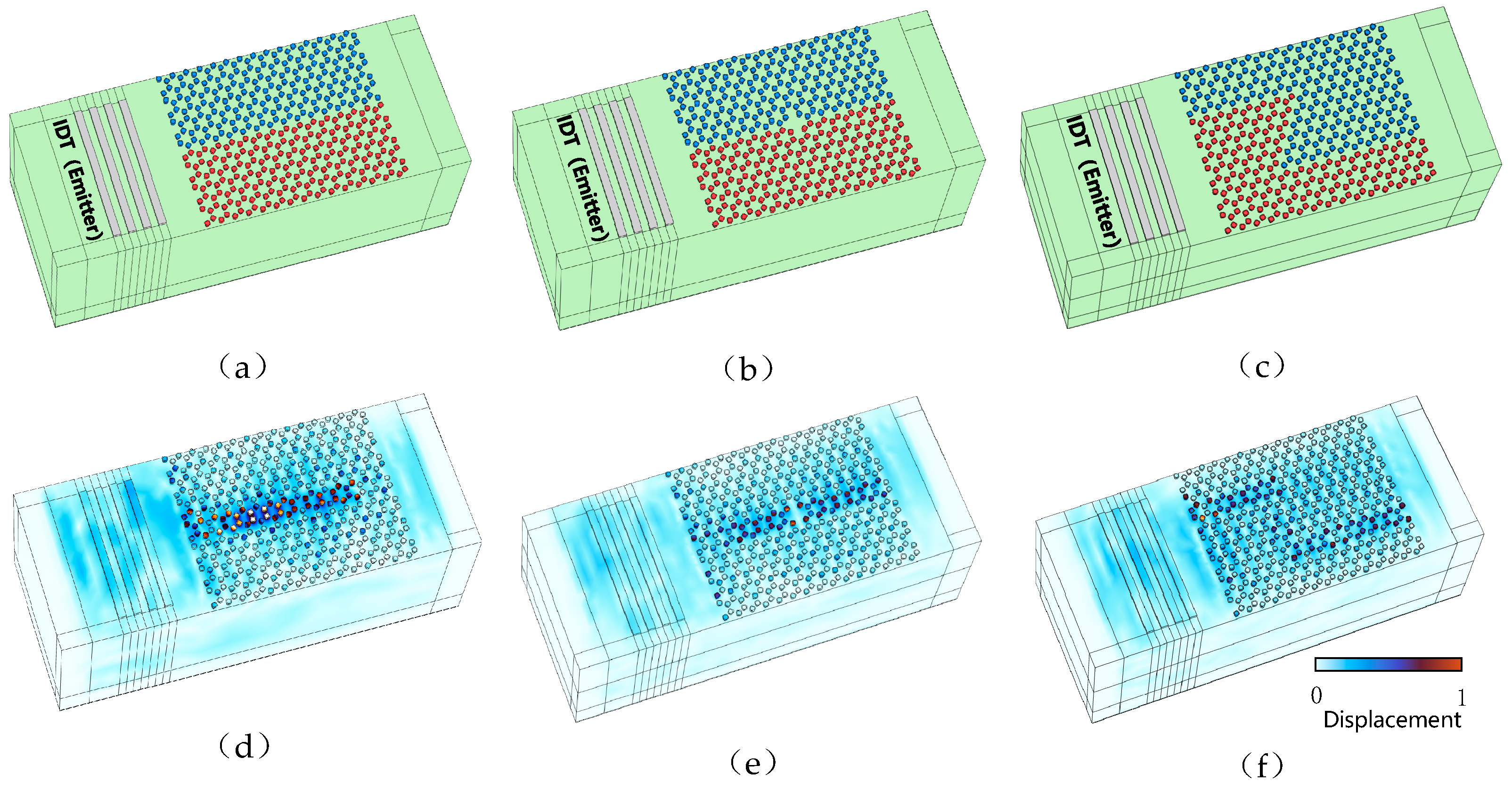
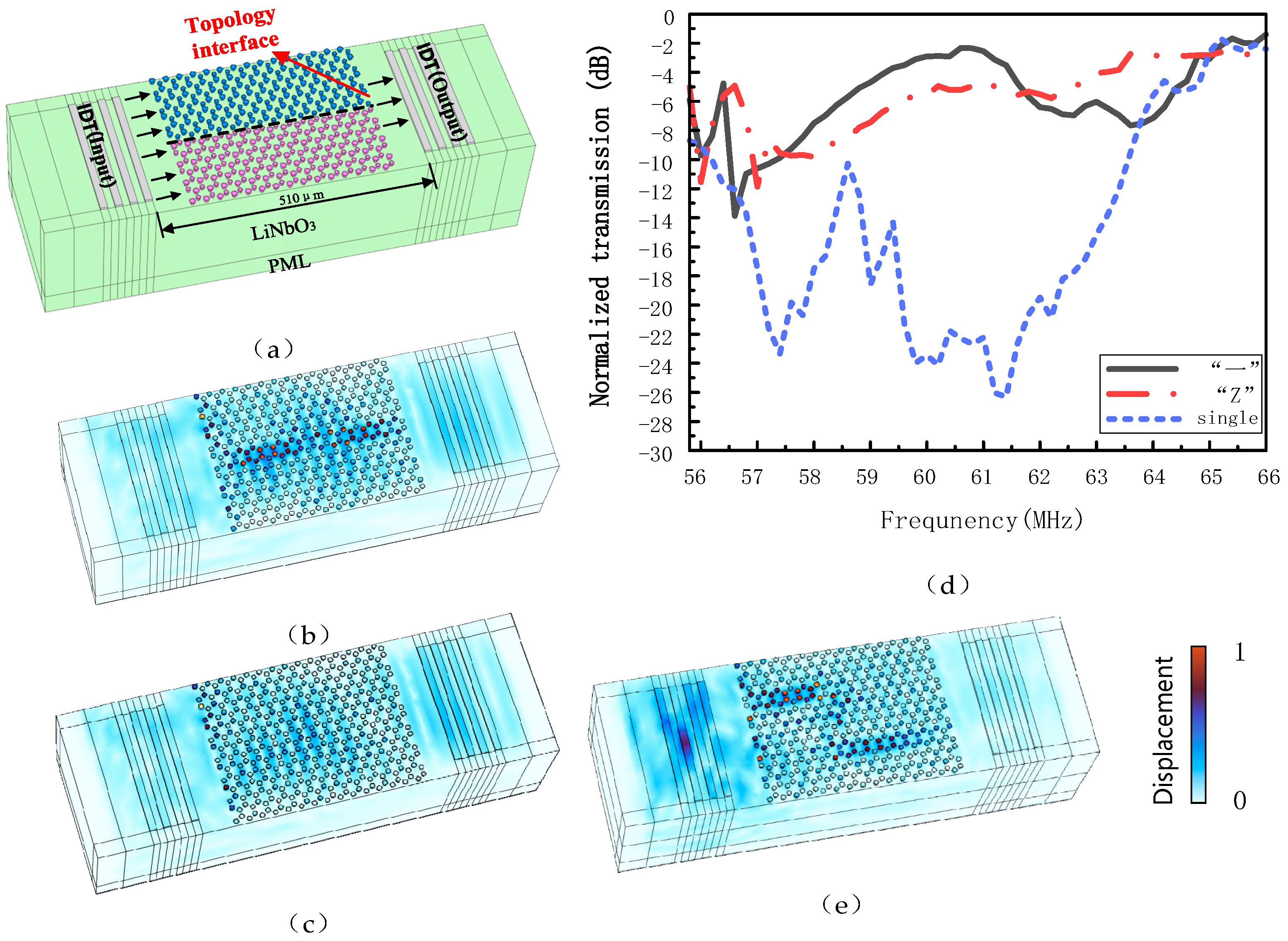


Disclaimer/Publisher’s Note: The statements, opinions and data contained in all publications are solely those of the individual author(s) and contributor(s) and not of MDPI and/or the editor(s). MDPI and/or the editor(s) disclaim responsibility for any injury to people or property resulting from any ideas, methods, instructions or products referred to in the content. |
© 2024 by the authors. Licensee MDPI, Basel, Switzerland. This article is an open access article distributed under the terms and conditions of the Creative Commons Attribution (CC BY) license (https://creativecommons.org/licenses/by/4.0/).
Share and Cite
Bai, J.; Li, L.; Chai, C. Improvement of SAW Resonator Performance by Petal-like Topological Insulator. Sensors 2024, 24, 5584. https://doi.org/10.3390/s24175584
Bai J, Li L, Chai C. Improvement of SAW Resonator Performance by Petal-like Topological Insulator. Sensors. 2024; 24(17):5584. https://doi.org/10.3390/s24175584
Chicago/Turabian StyleBai, Jin, Lixia Li, and Chenyang Chai. 2024. "Improvement of SAW Resonator Performance by Petal-like Topological Insulator" Sensors 24, no. 17: 5584. https://doi.org/10.3390/s24175584




